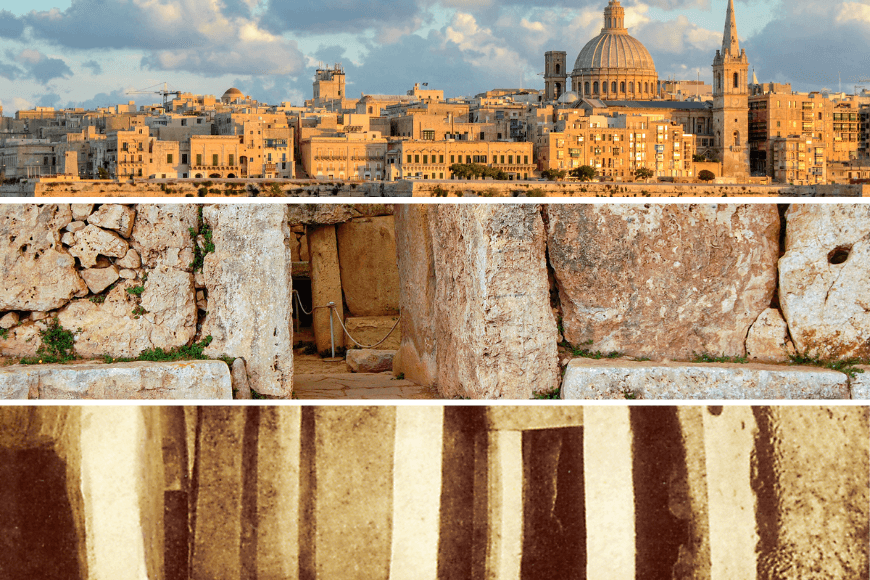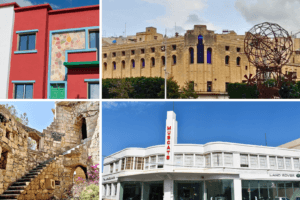
Today is World Heritage Day!
The International Day for Monuments and Sites, also known as World Heritage Day, is a global celebration held annually on the 18th of April. It celebrates the exceptional cultural and natural sites recognised by UNESCO.
Initially proposed by the International Council on Monuments and Sites (ICOMOS) on April 18th 1982, the celebration was soon adopted by UNESCO during its 22nd General Conference, aiming to promote awareness about the diversity of cultural heritage of humanity, their vulnerability and the efforts required for their protection and conservation.
World Heritage brings together exceptional cultural sites that belong to all humankind, such as the pyramids of Egypt, the city of Venice, and the Megalithic Temples of Malta. Indeed, Malta is home to three properties inscribed on the UNESCO World Heritage List which includes The Megalithic Temples of Malta, the Ħal Saflieni Hypogeum, and the City of Valletta.
The two temples of Ġgantija were first inscribed as “Temple of Ġgantija” in 1980 before the five other prehistoric temples in Malta and Gozo were added to the existing cultural property and remained “The Megalithic Temples of Malta”, spanning all known megalithic temples of their type across the Maltese Islands. Although differing in plan, articulation and construction technique, the Megalithic Temples of Malta (Ġgantija, Ħaġar Qim, Mnajdra, Skorba, Ta’ Ħaġrat and Tarxien) are recognised as being amongst the earliest free-standing prehistoric stone buildings in the world, dating to 4th and 3rd millennia BC. According to UNESCO:
Each complex is a unique architectural masterpiece and a witness to an exceptional prehistoric culture renowned for its remarkable architectural, artistic and technological achievements.
The Ħal Saflieni Hypogeum, on the other hand, was constructed entirely underground and is thought to have served as a cemetery throughout the Żebbuġ, Ġgantija and Tarxien Phases of Maltese Prehistory, spanning from around 4000 B.C. to 2500 B.C. The Hypogeum consists of three superimposed levels excavated into soft globigerina limestone. Given the nature of the Hypogeum, it is believed that it was further excavated and expanded with increased use, first occupying the higher level, and then gradually excavating laterally and downwards towards the middle and lower levels. UNESCO notes that one of the most notable characteristics of the Ħal Saflieni Hypogeum is that some of the chambers appear to have been cut in a similar architectural style and manner to the contemporary, above-ground megalithic temples. Beyond the architectural and engineering marvel expounded by the Hypogeum, the site also produced a wealth of archaeological material, including numerous human remains, intricately designed pottery vessels, shell buttons, stone and clay beads and amulets, as well as little stone carved animals and birds that may have originally been worn as pendants.
The City of Valletta, while added to the UNESCO World Heritage List contemporaneously with its older counterparts, signifies Malta’s historical legacy as home to the Order of the Knights of St. John between 1530 and 1798. Following the Knights’ victorious triumph against the Ottoman invasion during the Great Siege in Malta in 1565, Valletta was promptly built on Mount Sceberras in 1566 as a second line of defence and to fortify the Order’s position in Malta. Showcasing some of the finest Baroque architecture in Europe, Valletta is home to 320 monuments that encapsulate every aspect of the civil, religious, artistic and military functions of its founders. The City of Valletta remains capital city of Malta to this day, a living tribute to the enduring legacy of the Knights of St. John on the Maltese islands, as well as an evolving administrative and economic epicentre that welcomes visitors and locals alike. UNESCO reminds us that:
Valletta is a living city. It is the nerve centre of the Maltese political, administrative and business sphere as well as a major tourist attraction.
As we mark World Heritage Day, it is imperative to reflect upon the profound significance of Malta’s three esteemed World Heritage Sites: the City of Valletta, the Ħal Saflieni Hypogeum, and the Megalithic Temples. These exceptional landmarks stand as pillars of our collective heritage, embodying the rich tapestry of Maltese history and culture. Through our collective efforts, we can ensure that these landmarks continue to inspire awe and reverence for centuries to come, serving as enduring symbols of Malta’s cultural identity and legacy.
Pictured: Valletta, Ħaġar Qim, Ħal Saflieni Hypogeum



